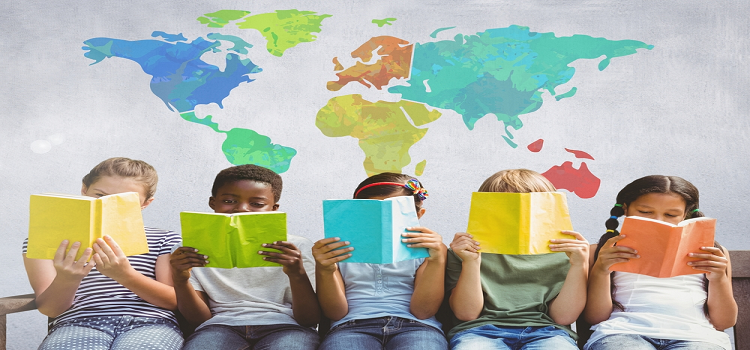A World of Learning in Flux
In a world where knowledge is power, education remains the cornerstone of societal advancement and personal growth. Yet, as we march deeper into the 21st century, the landscape of global education is undergoing profound transformations and facing unprecedented challenges. From the meteoric rise of digital learning to glaring educational inequities, the state of global education is a complex tapestry woven with both triumphs and tribulations. This article delves into the current trends in education, spotlighting technological innovations and remote learning, while also uncovering the stark disparities that persist across different regions. As we navigate this intricate terrain, we will explore pioneering approaches and policies aimed at bridging these gaps and enhancing educational systems worldwide.
Technological Advances in Education: Bridging the Gap or Widening It?
The Digital Learning Revolution
The advent of technology in education has revolutionized how knowledge is disseminated and acquired. From interactive e-learning platforms to sophisticated AI-driven tutoring systems, digital tools have opened new horizons for both educators and learners. Online courses, virtual classrooms, and educational apps are now commonplace, offering unprecedented access to information and learning resources.

Key Points:
- E-learning Platforms: Companies like Coursera, Khan Academy, and edX have democratized education, providing courses from top universities to anyone with an internet connection.
- AI and Machine Learning: Personalized learning experiences are now possible through AI-driven platforms that adapt to individual learning paces and styles.
- Gamification: Incorporating game elements into learning, platforms like Duolingo have made education more engaging and enjoyable.
However, this digital learning revolution is not without its challenges. While it has the potential to bridge educational gaps, it also risks widening them, particularly in regions with limited access to technology and the internet.
The Remote Learning Surge
The COVID-19 pandemic acted as a catalyst for the widespread adoption of remote learning. Schools and universities worldwide had to pivot to online education almost overnight, leading to a surge in the use of virtual learning environments.
Key Points:
- Global Shift: Remote learning became a necessity, with millions of students and educators transitioning to online platforms.
- Accessibility Issues: The shift exposed deep-seated inequalities, with students in rural or low-income areas often lacking the necessary technology or internet access.
- Innovative Solutions: Some regions implemented creative solutions, such as radio and television-based instruction, to reach students without internet access.
Educational Disparities: A Tale of Two Worlds
The Urban-Rural Divide
Educational opportunities often vary dramatically between urban and rural areas. While urban centers tend to have better infrastructure, more qualified teachers, and greater access to resources, rural areas frequently lag behind.
Key Points:
- Resource Allocation: Urban schools often receive more funding and resources, leading to better educational outcomes.
- Teacher Shortages: Rural schools frequently struggle to attract and retain qualified teachers, affecting the quality of education.
- Infrastructure Gaps: In many rural areas, basic educational infrastructure, such as schools and libraries, is lacking or substandard.

Socioeconomic Disparities
Socioeconomic status is one of the most significant determinants of educational outcomes. Children from low-income families often face numerous barriers to education, from inadequate nutrition to limited access to learning materials.
Key Points:
- Nutrition and Health: Poor health and malnutrition can severely impact a child’s ability to learn and perform in school.
- Access to Learning Materials: Low-income families may not afford books, uniforms, or even transportation to school.
- Support Systems: Wealthier families can often provide additional support, such as tutoring and extracurricular activities, which can enhance educational outcomes.
Gender Disparities
In many parts of the world, gender remains a significant barrier to education. Girls, in particular, often face cultural, social, and economic obstacles that hinder their access to education.
Key Points:
- Cultural Norms: In some regions, cultural norms prioritize boys’ education over girls’, leading to lower enrollment and retention rates for girls.
- Economic Barriers: Families with limited resources may prioritize boys’ education, viewing it as a better investment.
- Safety Concerns: In conflict-affected areas, safety concerns can prevent girls from attending school.
Innovative Approaches: Lighting the Path Forward
Policy Interventions
Governments and organizations worldwide are implementing innovative policies to address educational disparities and improve the quality of education.

Key Points:
Universal Access Policies: Some countries have introduced policies aimed at ensuring universal access to education, such as free primary and secondary education.
Conditional Cash Transfers: Programs that provide financial incentives to families for keeping their children in school have shown success in increasing enrollment and retention rates.
Teacher Training and Support: Investing in teacher training and professional development is crucial for improving educational quality.
https://newsreporto.com/tornado-warning-chicago-severe-thunderstorm-alert/
Community-Based Solutions
Local communities often play a vital role in addressing educational challenges and implementing sustainable solutions.
Key Points:
- Community Schools: Schools managed by local communities can be more responsive to the specific needs of the area.
- Parental Involvement: Engaging parents in their children’s education can significantly enhance learning outcomes.
- Local Partnerships: Partnerships with local businesses and organizations can provide additional resources and support for schools.
Technological Innovations
Technology continues to offer new possibilities for enhancing education and addressing disparities.
Key Points:
- Mobile Learning: Mobile technology can bring education to remote and underserved areas, providing access to learning materials and resources.
- EdTech Startups: Innovative startups are developing solutions tailored to the needs of different regions and populations.
- Open Educational Resources: Free and open educational resources can provide high-quality learning materials to anyone, anywhere.
Charting a Course for the Future
The state of global education is at a crossroads. While technological advancements and innovative approaches offer exciting possibilities for improving education systems, significant disparities persist. Addressing these challenges requires a multifaceted approach that combines policy interventions, community-based solutions, and technological innovations. By working together, we can create a more equitable and effective global education system that empowers every individual to reach their full potential. As we move forward, it is crucial to continue exploring and implementing creative solutions to bridge the gaps and ensure that quality education is accessible to all.


1 thought on “The State of Global Education: Innovations and Disparities”